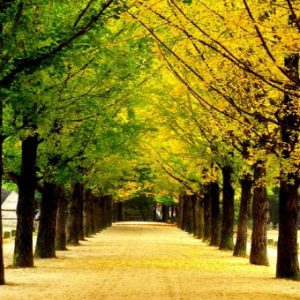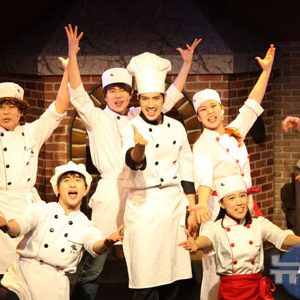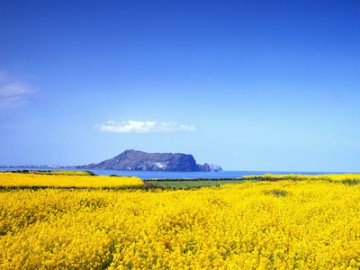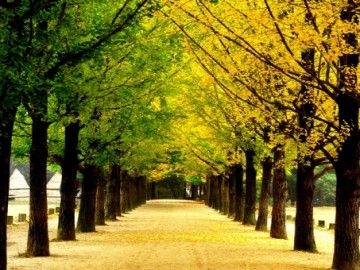South Korea
The Republic of Korea is a small country on the far eastern edge of Asia. Although it ranks 109th in the world in terms of land area, the country is a center of economic activity, culture, and arts. Korea was colonized by Japan in the early 20th century and later had to endure the Korean War (1950-53), but it has achieved amazing economic growth in a short period, dubbed “the Miracle on the Han River.”
With its scenic beauty and unique cultural and historical heritage, Korea has a lot to offer visitors. A peninsular country with four distinct seasons, Korea boasts picturesque valleys, mountains, rivers and beaches. Throughout this beautiful natural landscape, there are numerous ancient temples and shrines, royal palaces, sculptures, pagodas, archeological sites, fortresses, folk villages and museums.
The country has a continental climate of very cold, dry winters and very hot, humid summers. Winters are influenced by westerly winds from Siberia and the Mongolian plateau, while summers are generally characterized by an oceanic climate due to moist, warm winds from the Pacific Ocean. Korea has four distinct seasons, though spring and autumn tend to be short. Spring comes in early April and lasts throughout May. The hot and humid summer begins in June and lasts about four months. The summer rainy season lasts from the end of June to mid July. Summer ends in late September, giving way to crisp, clear autumn days that last until the end of October. It becomes colder in November, and a very cold, winter sets in during December and lasts until the end of February.
South Korea covers a total area of 99,392 km2 (38,375 square miles) and has a population of 50 million. The capital and largest city is Seoul, with a population of 10 million.
The DO’s
Do Save Face
Koreans are very sensitive people and feelings, or face, are extremely important. Therefore, never insult or criticize people in front of others to avoid them losing face.
Do have a business card ready
Business cards are exchanged after initial introductions with new partners. The way you treat someone’s business card is indicative of the way you will treat the person so examine any card you recieve care fully and never write on someone’s business card in that person’s presence.
Do developo realtionships
When doing business in Korea, endeavour to develop a respectful relationship with your Korean counterpart. Good relationships and informal agreements with a trusted counterpart are seen as far more secure than any legal contract. Don’t use western logic when dealing with your new contacts – it won’t translate. The first meeting with any potential partneris simply to ascertain whether he is trustworthy or not, so business isn’t discussed.A low deep bow from Koreans following a business meeting means the meeting was successful, but a short, quick bow means it wasn’t.
Do come bearing gifts
Gift giving is and important part of Koean culture. Gifts express a great deal about a relationship. Because they are always reciprocated, it’s best not to give expensive gifts, as this might be awkward for the recipient. Appropriate gifts when visiting someone’s home is considered unlucky. Giving seven of an item is deemded lucky. Wrap gifts in red of yellow paper, since these are royal colours. Alternatively, yellow or pink paper denotes happiness. Don’t wrap gifts in green, white of black paper.
Do receive gifts corrctly
If you’re on the receiving end, then refuse a couple of times first and then accept the gift – not accepting the gift would be offensive. Gifts aren’t opened when first received but put aside and opened later.
Do be after-dinner prepared
When leaving a gathering, thank your hosts graciously and bow ot each individual as a sign of respect. Expext to be walked out, as saying goodbye to guests inside is seen as insuling. After dinner. ths host my invite his guests to go drinking. Drinking competitions are common and it’s expected that invitations will be accepted.
Do go barefoot
Always remove your shoes when entering a Korean home. There are also some restaurants where you are supposed to enter with bare feet or with just socks.
Do mind your hands
It is polite to pass or accept anythings, especially money, with your right hand while your left hand supports your forearm or wrist. It is usually polite to have money or items ready before transactions are made. To beckon someone, extend your arm palm down, and move your fingers in a scratching motion. It s rude to point with your index finger.
The DONT’s
Don’t make a dash for the empty seat
It’s best to be told where to sit when visiting South Korea, as there is often a strict protocol to be followed. The eldest are seated first and the most senior person begins the eating process at dinner. The seat of honour is the seat looking at the front door, and if you are seated there, it is polite to protext initially before taking your place.
Don’t leave half your meal
Table manners in South Korea dictate that you shouldn’t leave anything on your plate. You can let people know that you’ve eaten enough by keeping your chopsticks on the chopstick rest or on the table.
Don’t point with your chopsticks
It’ll cause frowns and/or raised eyebrows. Don’t leave your chopsticks sticking up in the rice bowl either, as this is reminiscent of funeral ritual.
Don’t hold a glass with one hand
It’s the height of bad manners not to pick up a drink with both hands. Moreover, it’s considered polite to pour each other drinks. If you refuse to pour a drink for someone, it will be seen as offensive. If you want ot refiil, then finish your drink. If you don’t, leave some of your drinks in the glass.
Don’t turn up unannounced
Appointments are required for bussiness meetings and should be made three to four weeks in advance. It’s rude to turn up unexpectedly at someone’s place of work.
Don’t directly introduce yourself
Rather than introduce yourself to new acquaintances, wait to be introduced by somebody who knows both you and the person you would like to meet. Take this opportunity to ask ths person how he would like to be addressed, as only close friends or relatives will use names – Koreans will often call each other “Teacher”,”Manager”,”President”, etc. based on one’s status. when multiple people have the same title, then it is followed by the person’s three names.
Don’t forget to take a bow
Introductions in South Korea still start with a traditional bow and a firm handshake. The person who initiates the bow says,”Man-na-suh pan-gop-sumnida,” which means, “Pleased to meet you.”
Don’t blow your nose in public
It is perceived as vulgar.
Slightly larger than Indiana, South Korea lies below the 38th parallel on the Korean peninsula. It is mountainous in the east; in the west and south are many harbors on the mainland and offshore islands.
Freedom of religion is guaranteed by the Constitution in Korea. According to a 2005 social statistics survey, 53.1% of Koreans follow a specific religious faith. Buddhists account for some 43% of the religious population, followed by Protestants at 34.5% and Catholics at 20.6%. The remaining 1.9% mostly practice Confucianism, Shamanism, Islam and Chondogyo (Heavenly Way ), an indigenous religion.
http://www.mofat.go.kr/ENG/visa/application/index.jsp?menu=m_40_10
The ancient history of the Korean peninsula can be traced to the Neolithic Age, when Turkic-Manchurian-Mongol peoples migrated into the region from China. The first agriculturally based settlements appeared around 6000 B.C. Some of the larger communities of this era were established along the Han-gang River near modern-day Seoul, others near Pyongyang and Pusan. According to ancient lore, Korea’s earliest civilization, known as Choson, was founded in 2333 B.C. by Tan-gun.
In the 17th century, Korea became a vassal state of China and was cut off from outside contact until the Sino-Japanese War of 1894–1895. Following Japan’s victory, Korea was granted independence. By 1910, Korea had been annexed by Japan, which developed the country but never won over the Korean nationalists, who continued to agitate for independence.
South Korea came into being after World War II, the result of a 1945 agreement reached by the Allies at the Potsdam Conference, making the 38th parallel the boundary between a northern zone of the Korean peninsula to be occupied by the USSR and southern zone to be controlled by U.S. forces.
Elections were held in the U.S. zone in 1948 for a national assembly, which adopted a republican constitution and elected Syngman Rhee as the nation’s president. The new republic was proclaimed on Aug. 15 and was recognized as the legal government of Korea by the UN on Dec. 12, 1948.
wordpress theme by initheme.com
-
-
កូរ៉េៈ សេអ៊ូល-សូរ៉ាក់ ៦ថ្ងៃ ៥យប់
Maximum number of people : 20 peopleDuration : 6Days 5NightsBook Now
Total: 2 tours . Showing 1 - 2 view all
Search for Tour
Not what you're looking for? Try your search again










